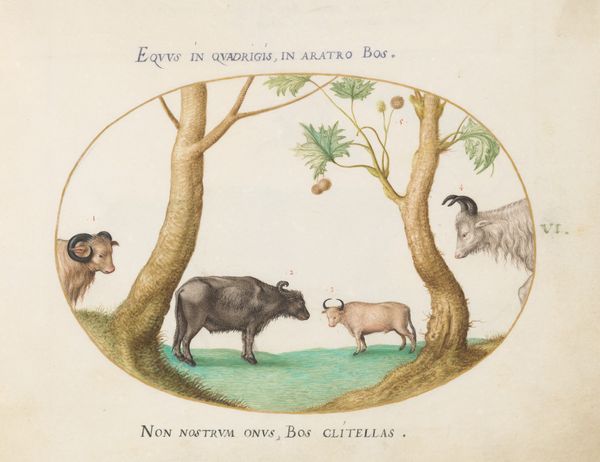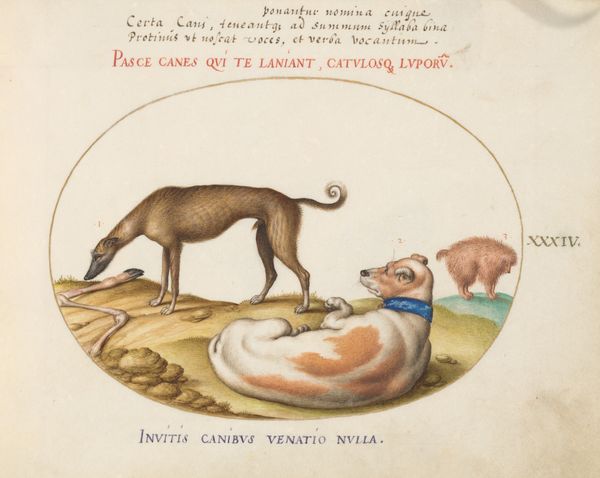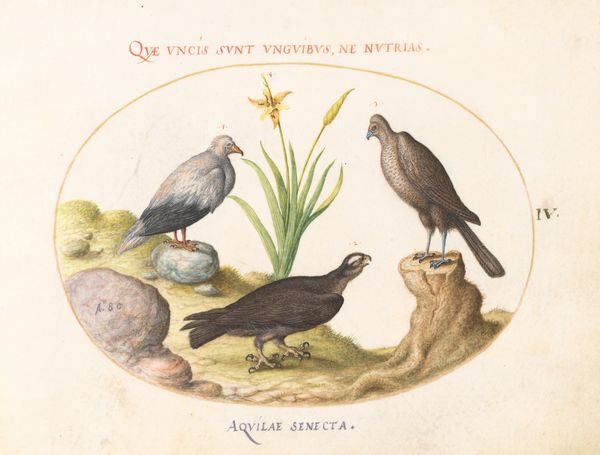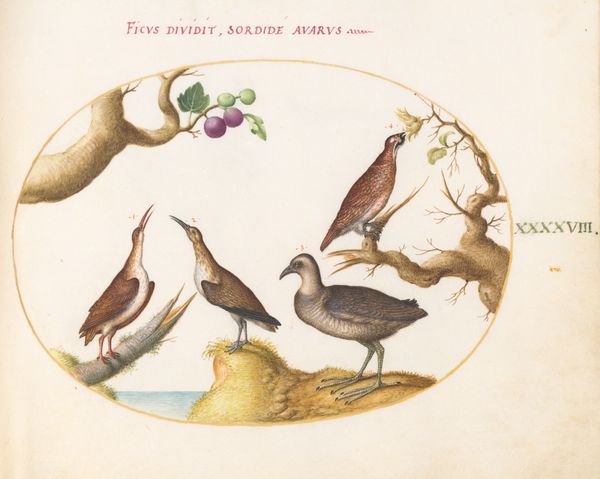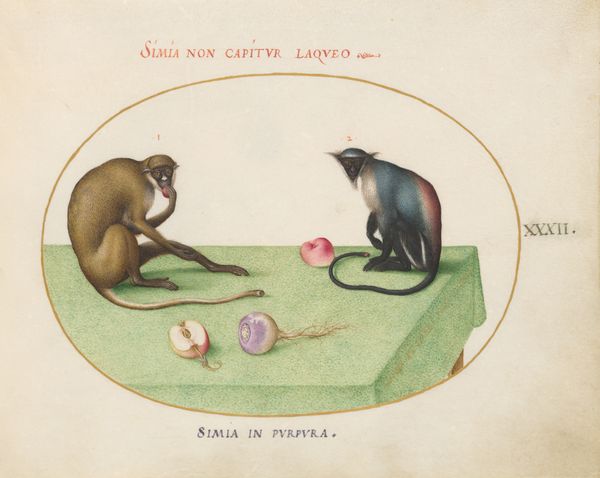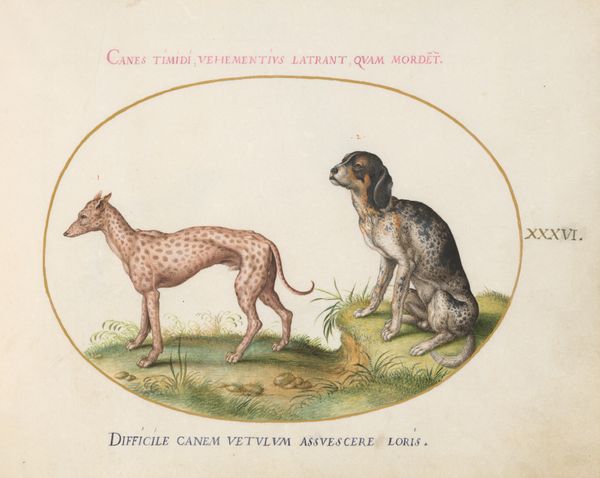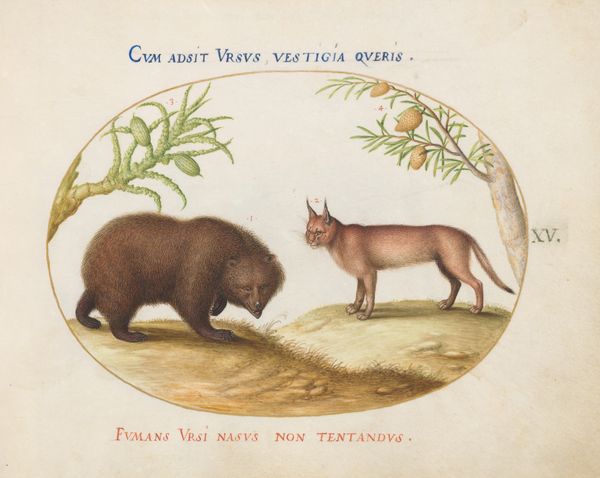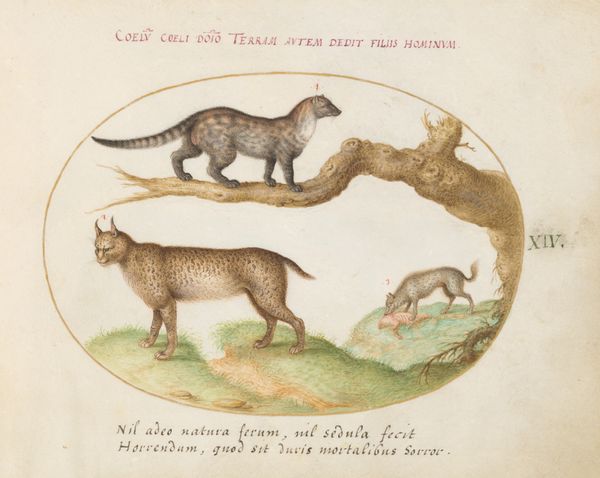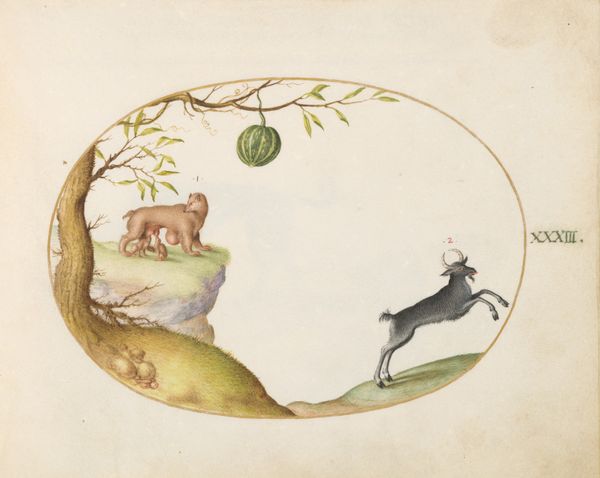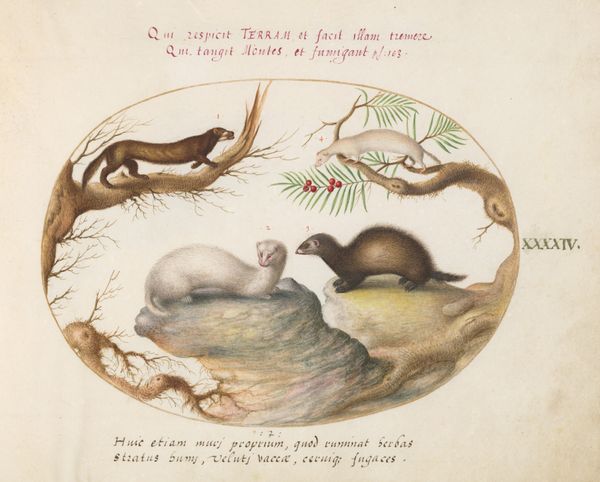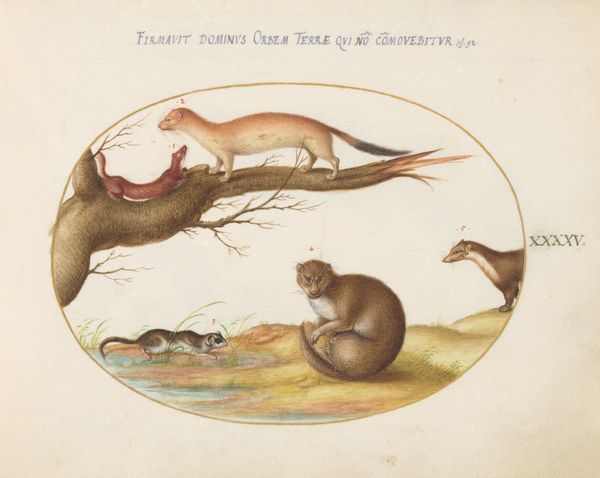
Plate 39: Three Puppies with a Crate and a Bunch of Grapes 1580
0:00
0:00
drawing, watercolor
#
drawing
#
water colours
#
11_renaissance
#
watercolor
#
northern-renaissance
#
botanical art
#
miniature
Dimensions: page size (approximate): 14.3 x 18.4 cm (5 5/8 x 7 1/4 in.)
Copyright: National Gallery of Art: CC0 1.0
Curator: Before us, we have Joris Hoefnagel’s “Plate 39: Three Puppies with a Crate and a Bunch of Grapes,” a watercolor drawing dating back to 1580, placing it firmly within the Northern Renaissance. Editor: It’s charming, instantly endearing. The detail, even at this presumed scale, is remarkable. I am struck by the juxtaposition of the playful pups against what seems a somewhat barren landscape—almost melancholic, don’t you think? Curator: From a formal perspective, observe the composition within the oval frame. The deliberate placement of elements – crate, grapes, a peculiar vegetable perhaps, and, of course, the puppies – creates a balanced visual rhythm. Consider the lines, the curves, the contrasts in textures; all meticulously rendered. The script bordering the composition adds another layer as well. Editor: And what might this layer communicate? The Latin text points to an educated audience, and Hoefnagel often worked for wealthy patrons interested in natural history and symbolism. It makes me consider the lives of these animals. Were they pampered pets, or were they working dogs? Are those grapes symbols of luxury and indulgence, and in juxtaposition, are they pointing to societal excess and disparity? Curator: It's intriguing how the precise watercolor technique invites such interpretive speculations. However, might it not also simply celebrate the natural world? To over-burden such a delicate miniature with modern critique risks overshadowing the artist's mastery of observation and the beauty of execution. Editor: But art, even botanical art, exists within a socio-political landscape. Hoefnagel was working during a time of great upheaval, religious conflict, and growing colonial ambitions. To ignore the impact this could have had is intellectual dishonesty. Curator: I'd counter that by getting hung up on speculation about historical turmoil risks alienating from the experience. Focusing too narrowly on political contexts means missing the simple wonder this detailed artwork inspires. Editor: Maybe. But context always adds a layer to an artwork. Ignoring it leaves a viewing experience superficial and detached. Understanding it empowers the observer with new perspectives and more comprehensive insight. Curator: A fair point, though I shall hold to my initial reaction that is work primarily exhibits artistry in its finest form, not any strong underlying themes. Editor: Well, whatever its meanings and implications, the quality of this artwork can definitely offer all observers insight into a world now past.
Comments
No comments
Be the first to comment and join the conversation on the ultimate creative platform.



